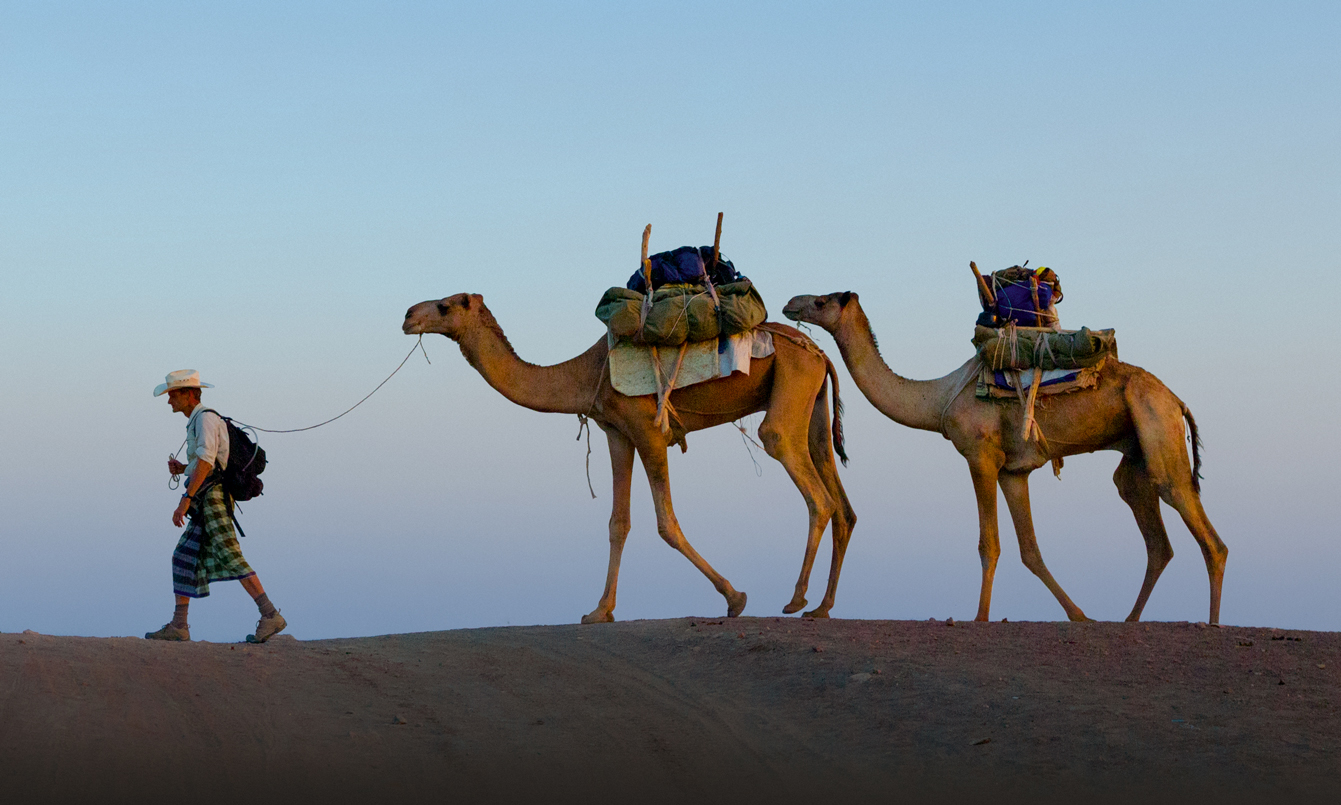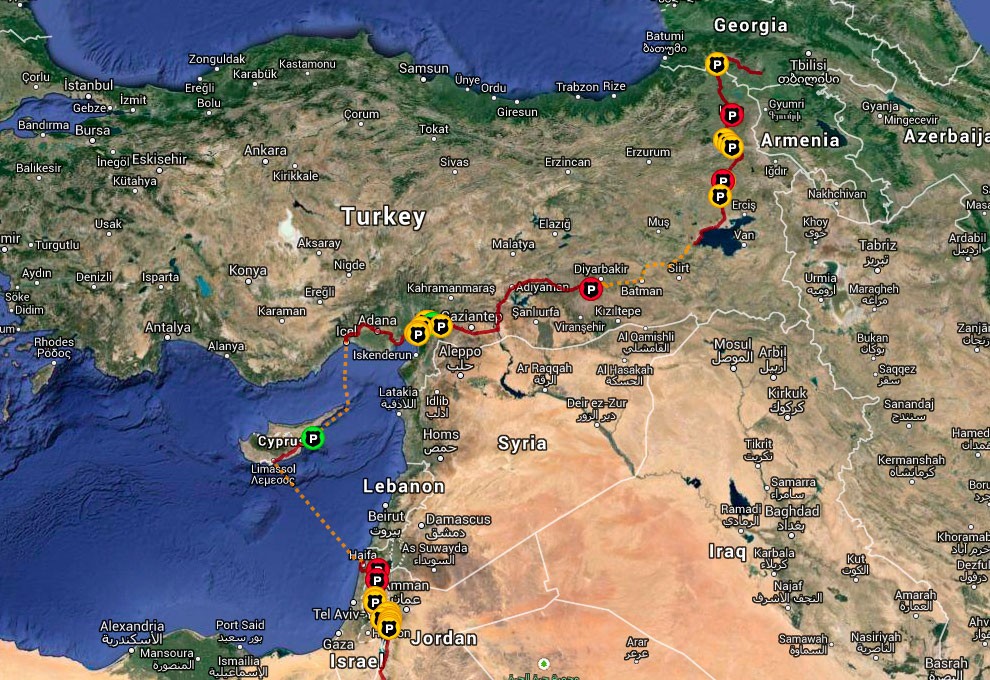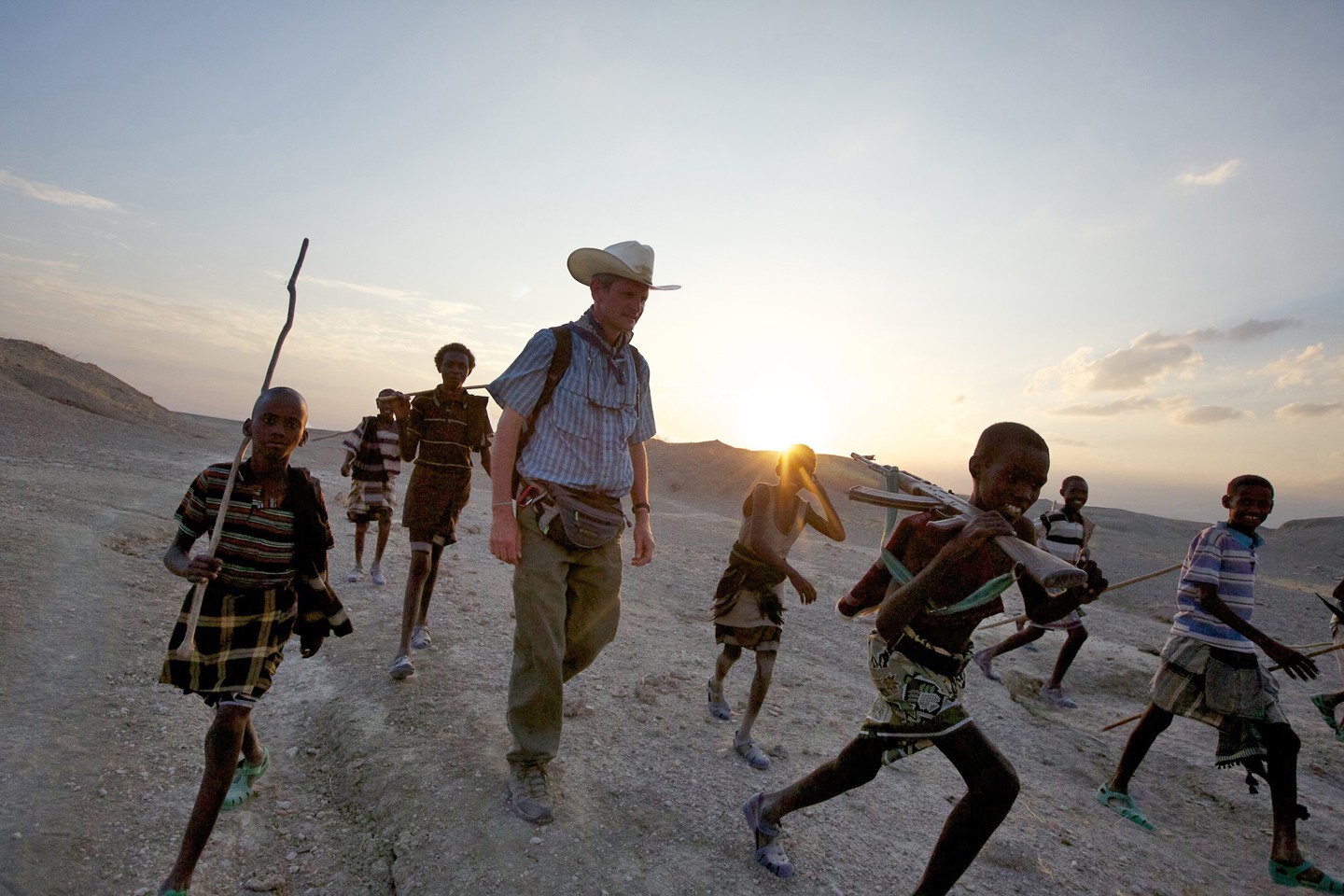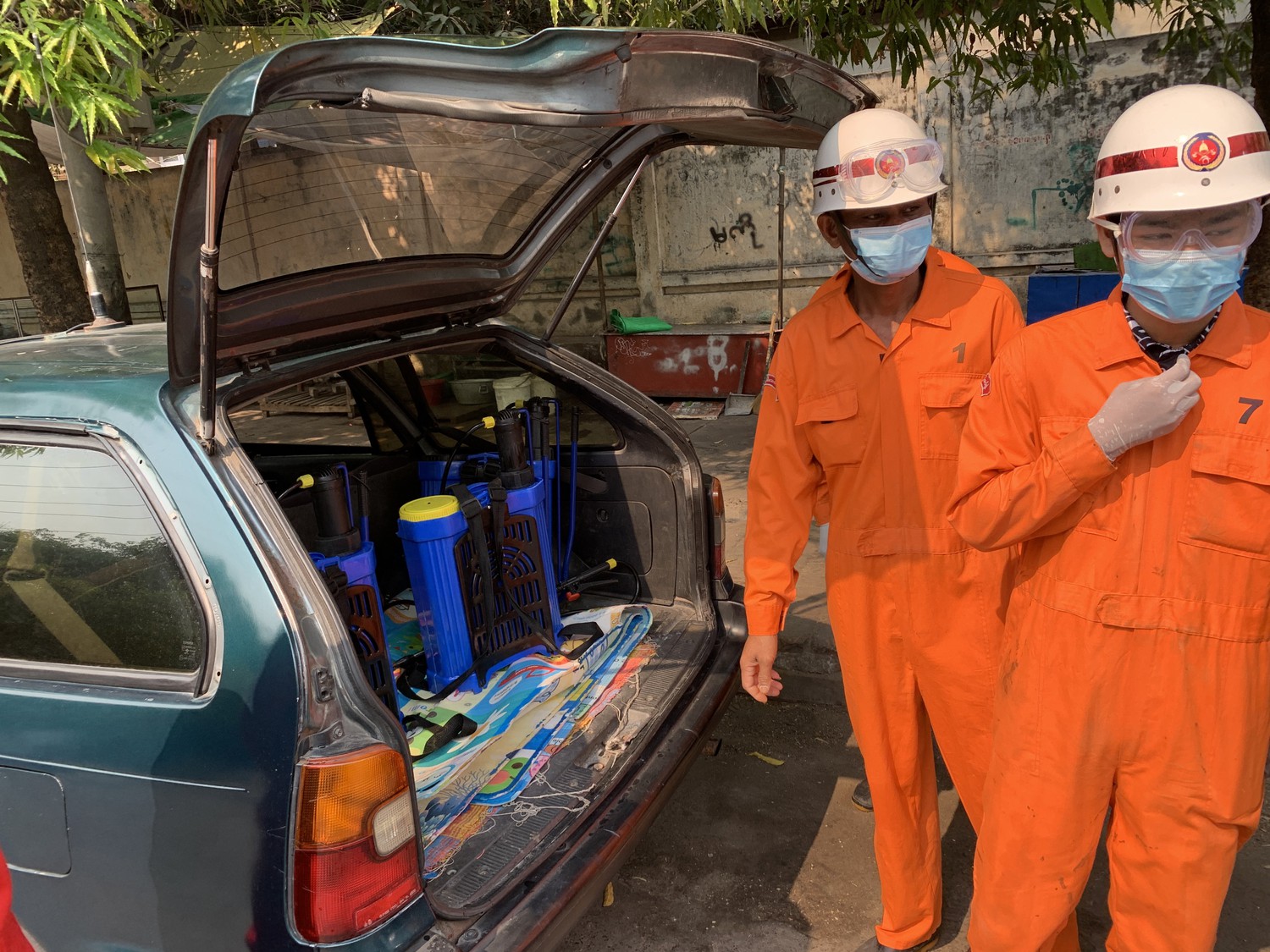For this week’s blog post we explored National Geographic’s Out of Eden Walk. A journey cataloged by Paul Salopek as he takes a 21,000-mile walk along the path of the earliest humans as they migrated out of Africa and across the world.

Chapter 1:
The first stop for Paul, and for me, was Africa. I have been very lucky in my life to have been able to travel to Africa and see for myself the beauty that this continent has to offer. I was very interested and excited to explore this stop on Paul’s journey.
To begin, Paul and the NG team provided a great map explaining the timeline of human migration in the world starting 200,000 years ago. Starting in Ethiopia, Paul and his guide Ahmed begin their journey, heading north. I have always loved National Geographic and have been a subscribing member for many years now. The visuals and connections that these artists and photographers can bring to their viewers have always been astounding. They can capture a moment that is still able to be felt many thousands of miles and many weeks later.
I really enjoyed the Glances videos for the Ethiopia section of the Eden walk. The unclose visuals bring a reality to the world that is so far away. The photos and panorama viewfinder was very cool as well.
The Encounters section of the Eden walk is interesting because it gives us a chance to see people in the region and gain a small insight into the daily mind of someone in this area. While in Ethiopia, Paul interviews a man named Idoli, who is a pastoralist, or a sheep/cattle farmer. He speaks to the trouble with his career due to the bush and lack of water, and how he wishes for his children to be educated so they do not have to be a farmer like him. It was really interesting to see the belief system as well a little in the interview, Idoli speaks about humans beginning with Adam and Eve and that’s the creation story he believes.

It is unimaginable to put myself in Paul’s shoes. A seven-year journey on foot, the journey alone seems exhausting but I cannot imagine planning it. Far in advance picking out guides and pack animals, booking things for estimated dates, hoping for no delays, it definitely could not have been easy. In one section of this chapter, Paul speaks about how they ordered camels and men to help them take their belongings across a desert with minimal water and temperatures reaching 120 degrees. The camels and men never showed up, Paul and Ahmed were then forced to purchase animals off the cuff with no prep or planning. It is an amazing skill to be able to take the world in stride and not panic so far from home when things start to come undone a little.
Chapter 3: Autumn Wars
Paul gives a brief history of Anatolia, and how it has been a center point for conflict and power control for hundreds of years and from hundreds of invaders and conquerors. Only in the last 90 years have things started to become more modernized in this area of the world.
Paul is on a boat crossing the Mediterranean Sea on a cargo carrier called the MV ALIOS and heading towards Turkey. It was interesting to see the small boat quarters he had all to himself, I was shocked at how spacious it was. Paul stopped in Cyprus along the way and began his journey with Kilic and his wife Elif, who were to be his guides through Asia Minor. They pick up a 22-year-old mule to be their pack animal and walk through Turkey. I really enjoyed the section of the chapter where Paul explains a little more about Turkish/Anatolian culture. The people often seek the refuge of their rooftops after a long day. Eating, relaxing and sleeping on the rooftops is a way of life for the Anatolian people, and pays homage to their camping origins in the early Stone Age. It is amazing how tradition is born out of history in these ways.

It was interesting exploring this chapter because so much of this area is mixed between new and old. As Paul walks through Asia Minor on his way to China, he speaks to how interesting it was watching people playing cards on 1900-year-old plinths, churches, and synagogues that have been standing for half a millennium and the history that is behind some of these places.

Paul then begins to enter the area of Turkey that has been receiving many Syrian refugees as they flee the war going on in their own country. Women talk about men’s arms being cut off and women being sold into slavery at markets in Syria where the Islamic State has gained power. Paul talks a bit about the people from Syria he had met along his journey, boatmen with no home to return to, families picking vegetables for 11$ a day. It must be hard on the road to witness all of this suffering and not be able to help much. Paul speaks how some of the refugees he met along the way had absolutely nothing but still offered to let him share their tent for the night so he had a safe place to sleep. People are amazing creatures.

On his journey, Paul also documented his experiences with the police in the various areas of the globe he was walking. He recorded all of these stops as they happened, and the grand total was about 1 stop per 100 miles by some kind of Police Stop. He makes an interesting point, that today may people distrust those who walk in a world so powered by cars. Even in the small corner of America where I live, sometimes you do feel a certain skepticism of someone walking instead of driving. One of Paul’s most memorable stops was in Turkey, where he was stopped by a small Kurdish militia that nearly shot him.
One encounter in Chapter 3 I enjoyed was of two boys ages 14 and 15, it was a small interaction between them and Paul. He asks them what they want to do, one boy replies to all the questions and the other responds to none. When Paul asks why the talkative boy responds ‘He’s a thinker”.
Chapter 5: Riverlands
Now in Pakistan, Paul is continuing his journey. He encounters a Police Officer named Waqar Shah, who escorts Paul to a town where he will have to get a taxi in order to pass through a violent area of Pakistan, known to have local villages pillage travelers and steal from them.
From there Paul is walking again and find’s himself on the Grand Trunk Road, a road that has been in use for over 2,300 years. One of the oldest trade routes in Asia, it connects the Bay of Bengal on the coast, continues upward and into Afghanistan. The interesting thing about the Grand Trunk Road is that despite the government building a higher, faster, more efferent road, the Grand Trunk Road is still used constantly. Every kind of person uses the GTR. Walking the GTR however has its disadvantages, Paul speaks to the pollution and inescapable exhaust from cars as they make their way along the road.

In India, at one-stop he is in the Punjab region and is stopped by a man on the side of the road who calls to him to wait, to come inside and rest while he waits for ‘miscreants” to leave the part of the road they were blocking. Unfortunately, most of India’s drug use comes from rural areas, and Paul said he has walked past countless needles and drug vials on the road in his travels. Despite this, however, a lot of Indian people want the best for themselves and their children. Most have goals of education outside of India, and look to countries like New Zealand, Canada, Australia, but not Trump’s angry America (LOL). Many people had stopped Paul on his journey to test their English speaking skills with him, many have to pass English language tests before being accepted into any study program. It is an interesting time in the Punjab region, where many people view migration as having status, if you can get out, you are successful.
An encounter I enjoyed was in Allahabad, India – Mahindra Yadav, a 27-year-old farmer whose family had been there for multiple generations. He enjoys farming and does not wish to leave his home if he can help it. Monsoons and inclement weather sometimes require families to search for work outside of their farms for a while if the crops suffer.
As Paul and his guide continue their way through India, he speaks to the water crisis and how desperate people are for the magic resource that is water. About half of the country of India suffers from a lack of water and how resources available are estimated to be depleted in less than 2 years. Some Indian farmers told paul that their water tables have dropped between 40-100 feet in a single generation. Water is a resource, I personally believe mankind is extremely slow to realize that is depleting. It is interesting to see how different areas of the world value and view water. We can take for granted so easily here.
Paul takes a section of this chapter to talk about the human violence he witnessed along his journey. Paul has walked the edges of competing herders in Africa, been shot at by the Israeli Army, held up by Kurdish militia, and even has had run-ins with the Taliban as he crossed into Afghanistan.

Despite this, however, Paul argues that the scary/violent moments in his journey were heavily outweighed by the good ones. That even in war-torn areas of the middle east were met with kind and good people. The good actions taking up 95% of his interaction with other people on his journey. It is amazing to me that despite multiple experiences that would have most people running for home, Paul is in good spirits and insists that those were not the most interesting parts of his journey.
This brings us to the most current of Paul’s entries. He is currently in Myanmar during the COVID19 crisis. Myanmar is one of the poorer countries in the world, and although confirmed cases of the virus are low, they do not believe that is an honest representation of the effects due to lack of testing and a population of over 50 million.

So far, the worst of the virus has been concentrated in areas with higher development and air travel and has not been as bad in more rural or countries with poor socioeconomics. It is hard to shut down a system where many people live week to week, or even meal to meal.
This project is so interesting and inspiring for me. I was happy to be able to take the time and really explore all of the places Paul has been able to visit. I think this project brings these beautiful places to light, and Paul does a great job of highlighting not just the bad, but the true good nature of most people. If it can inspire even just one person to travel outside their comfort zone that is amazing.
Thanks-a-mundo for the blog post. Really Cool.